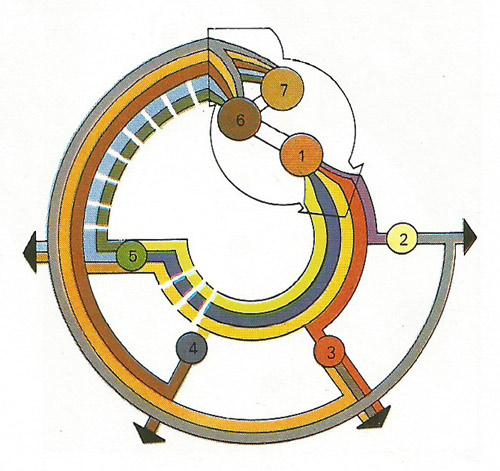endocrine system

A schematic plan of the endocrine system shows the reciprocal action – or feedback mechanisms – governing the release of hormones. Most influential is the anterior pituitary (1) secreting "trophic" hormones to trigger production in the thyroid (2), adrenal cortex (3), testes in the male (4), and ovaries in the female (5). These then affect the hypothalamus (6) and the posterior pituitary (7) which in turn influence anterior pituitary anterior.
The endocrine system is the system that, along with the nervous system, functions in the regulation of body activities. The nervous system acts through electrical impulses and neurotransmitters to cause muscle contraction and glandular secretion. The effect is of short duration, measured in seconds, and localized. The endocrine system acts through chemical messengers called hormones that influence growth, development, and metabolic activities. The action of the endocrine system is measured in minutes, hours, or weeks and is more generalized than the action of the nervous system.
The endocrine system is made up of the endocrine glands that secrete hormones. Although there are eight major endocrine glands scattered throughout the body, they are still considered to be one system because they have similar functions, similar mechanisms of influence, and many important interrelationships.
The other major category of glands in the body, which does not form part of the endocrine system, is the exocrine glands.


